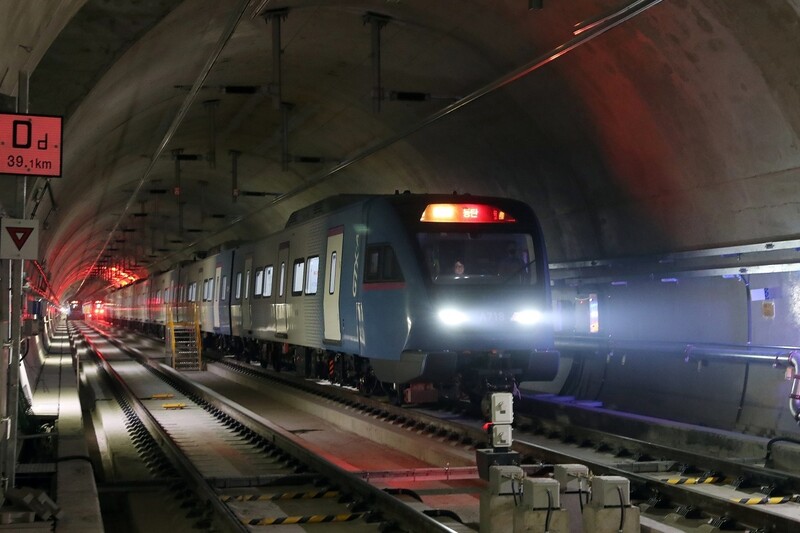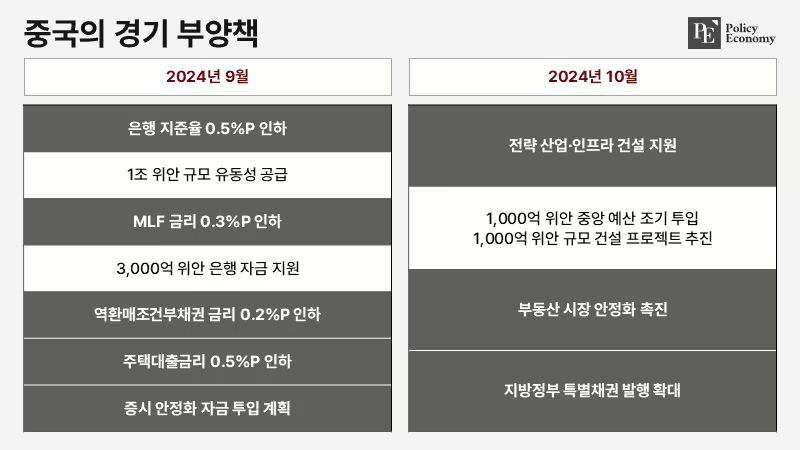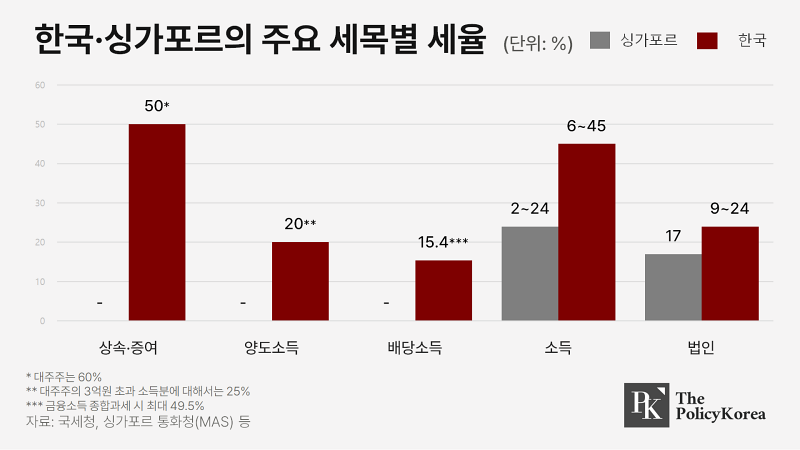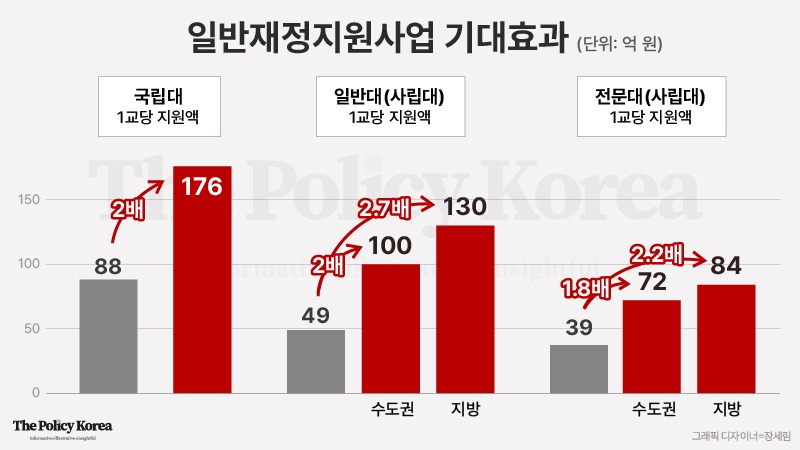[동아시아포럼] 日 관광산업, ‘매스투어리즘’을 둘러싼 갈등과 대응 전략
'천년 고도' 교토, 오버투어리즘 논란에 버스 1일권 폐지 주택시장·상업시설도 관광업에 쏠리면서 현지 주민 외면 숙박세가 市 재정의 12.8%, 관광업 수익 외면할 수 없어
[동아시아포럼]은 EAST ASIA FORUM에서 전하는 동아시아 정책 동향을 담았습니다. EAST ASIA FORUM은 오스트레일리아 국립대학교(Australia National University) 크로퍼드 공공정책대학(Crawford School of Public Policy) 산하의 공공정책과 관련된 정치, 경제, 비즈니스, 법률, 안보, 국제관계에 대한 연구·분석 플랫폼입니다. 저희 폴리시코리아(The Policy Korea)와 영어 원문 공개 조건으로 콘텐츠 제휴가 진행 중입니다.
일본의 대표적인 관광지인 교토가 ‘예의를 지켜주세요(mind your manners)’라는 캠페인과 함께 버스 1일권을 폐지하는 등 새로운 관광 정책을 추진하고 있다. 버스 1일권은 하루 무제한으로 시내버스를 승차할 수 있는 이용권으로 교토를 찾은 관광객들은 이를 통해 인기 있는 관광지들을 하루에 모두 방문할 수 있었다. 하지만 주요 관광지를 포함한 노선의 경우 관광객들로 붐비는 탓에 출근하거나 등교하는 현지 주민들이 이용하는 데 제약이 많았다. 이에 지난 2월 교토시 교통국은 시가 혼잡을 완화하기 위해 버스 1일권의 판매를 9월 종료하고 오는 2024년 3월 말에는 전면 폐지한다고 밝혔다. 다만 버스 1일권을 폐지하는 대신 버스와 지하철을 모두 이용할 수 있는 이용권은 그대로 운영할 예정이다.
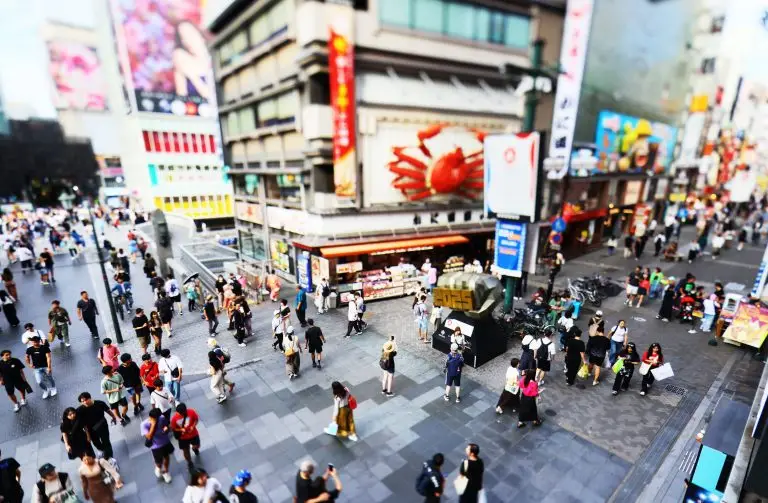
팬데믹 이후 관광객 급증하면서 현지 주민 불편 심화
지난해 교토를 방문한 내·외국인 관광객은 4,000만 명대로 코로나19 팬데믹 이전의 80% 수준까지 회복됐다. 하지만 관광객이 증가하면서 관광 공해(sightseeing pollution)에 대해 우려의 목소리가 높아지고 있다. 실제로 최근 교토는 관광객이 급증하면서 대중교통이 혼잡해진 데다 평균 대기 시간도 늘어났다. 지난해 현지 주민을 대상으로 실시한 설문조사에서는 응답자의 80%가 ‘관광객으로 인해 버스·지하철과 거리가 지나치게 혼잡하다’고 답했고 응답자의 3분의 1은 길거리를 걸으면서 먹거나, 쓰레기를 투기하는 관광객들의 행동에 대해 우려를 나타냈다.
관광산업에 대한 교토의 입장은 매우 복합적이다. 알려진 바에 따르면 교토 주민의 5명 중 1명이 관광업에 종사하고 있으며, 숙박세가 교토시 재원의 12.8%를 차지한다. 관광객이 감소하면 주민의 소득이 감소하고 시의 재정 여건이 악화될 만큼 관광업에 의존하고 있는 셈이다. 실제 지난 2018년 교토를 방문한 관광객은 5,200만 명으로 이들은 총 87억 달러(약 1조13,000억원)을 지출했는데 이는 교토시 명목 GDP(국내총생산)의 5분의 1에 해당하는 규모다.
하지만 관광객을 유치하기 위한 주택시장과 상업시설의 변화는 관광 젠트리피케이션(tourism gentrification)을 유발했다. 특히 주택시장에서는 건물주나 임대업자들이 관광객들을 위한 숙박업에 몰리면서 현지 주민들이 외면받기 시작했다. 관광 성수기에 여행객들에게 단기간 임대하는 것이 장기 주택 임대보다 더 많은 이윤을 남길 수 있기 때문이다. 상점과 레스토랑도 현지 주민이 아닌 관광객을 대상으로 서비스를 제공하면서 주민들의 불편이 늘어났다. 쇼에이 무라야마 교토 시의원은 지난 2020년 2월 시장 선거에 출마하면서 캠페인을 통해 ‘오버투어리즘(overtourism)이 천년 고도 교토를 파괴하고 있다’는 메시지를 강조하기도 했다. 비록 쇼에이 의원은 시장 경선에서 승리하지 못했지만 그의 캠페인은 매스투어리즘(mass tourism·대규모 관광)에 대한 논쟁을 불러일으켰다.
日, 2000년대 관광업 적극 육성했지만 팬데믹 타격
일본 정부는 2000년대 초반부터 관광업을 경제 발전을 위한 핵심산업으로 보고 집중적으로 지원했다. 일본 국토교통성은 2003년 ‘비지트 재팬(Visit Japan)’ 캠페인을 벌인 데 이어 2006년 관광진흥기본법을 시행하고 2008년에는 관광청을 설립했다. 관광산업 활성화를 위해 때로는 정치적 요소를 고려하기도 한다. 일례로 지난 2009년 중국의 개별자유여행객(Free Individual Travellers, FIT)에 대한 비자 규제를 완화했고 2011년에는 동일본 대지진으로 황폐해진 도호쿠 지역의 경기부양을 위해 국제사회에 재건 관광을 홍보하기도 했다.
그 결과, 지난 2013년 도쿄가 2020년 하계 올림픽와 패럴림픽의 개최지로 선정된 이후부터 코로나19 직전인 2019년까지 일본을 찾은 인바운드 관광객 수는 3배 가까이 증가한 3,200만 명을 기록했다. 2019년 인바운드 관광객의 총 지출은 321억 달러(약 42조2,404억원)로 반도체 수출액 268억 달러(약 35조2,715억원) 보다 많았다. 하지만 코로나19 팬데믹을 계기로 관광산업은 큰 변화에 직면했다. 일본 정부는 2020년 4월부터 2022년 10월까지 국경을 폐쇄했다. 이 기간 관광산업은 완전히 중단됐고 더 이상 관광업은 일본 경제의 핵심산업이 될 수 없었다. 고육지책으로 일본 정부는 국내 여행 수요를 회복하고 호텔 등 숙박업의 파산을 막기 위해 지역 관광소비에 일정 금액을 지원하는 ‘고 투 트래블(Go To Travel)’ 정책을 추진하기도 했다.
하지만 팬데믹 기간 동안 인바운드 관광객이 거의 전멸하면서 해외 방문객의 비중이 큰 주요 관광명소는 큰 피해를 입었다. 앞서 교토 주민을 대상으로 한 설문조사에서 응답자의 절반은 ‘팬데믹 기간동안 지역 경제가 심각하게 악화했으며 관광산업이 팬데믹 이전 수준으로 회복하기를 희망한다’고 답한 바 있다.
이들의 바람대로 지난해부터 각국의 국경이 개방하면서 여행 수요가 회복됐고 여기에 역대급 엔저 현상이 이어지면서 일본을 찾는 관광객이 급증했다. 일본관광협회에 따르면 지난 9월 인바운드 관광객 수는 220만 명으로 팬데믹 이전의 96%에 달했고, 올해 2분기 기준 인바운드 관광객의 총 지출도 82억 달러(약 10조7,887억원)를 기록하며 회복세를 부추겼다.
관광 공해 개선 위해 관광객 1인당 지출 늘리는 전략
이런 가운데 올해 3월 일본 정부는 관광진흥기본법을 개정하면서 오는 2025년까지 인바운드 관광객 1인당 지출 1,300달러(약 170만원)를 달성하겠다는 정책 목표를 제시했다. 관광 공해를 줄이기 위해 관광객 수를 늘리기보다는 소비를 많이 하는 부유한 해외 여행객을 유치하는 전략으로 선회한 것이다. 일본의 관광산업에서 1인당 지출이 많은 주요 고객은 영국·중국·호주 관광객이다. 하지만 중국 관광객 수는 좀처럼 코로나19 이전 수준으로 회복되지 않고 있다. 지난 8월 중국 정부는 해외 단체관광 금지를 해제했지만 최근 일본 정부가 도쿄전력 후쿠시마 제1원전 오염수를 태평양에 방류하면서 중국 단체 여행객들이 일본 여행에 기피하고 있기 때문이다.
지난 8월 일본을 방문한 중국인 36만4,100명으로 코로나19 이전인 2019년 동월 대비 36.4% 수준에 불과했다. 2017년 하와이와 같은 규모의 관광객을 유치했던 오키나와도 중국 관광객 수가 코로나19 이전으로 회복되지 않고 있다. 지난 7월 중국을 방문한 타마키 데니(Tamaki Denny) 오키나와현 주지사가 오키나와 나하와 베이징·상하이를 잇는 직항 노선을 재개하는 데 합의했지만 관광객 수는 더디게 회복되고 있다. 실제로 지난 9월 기준 오키나와의 인바운드 관광객 수는 코로나19 이전의 50% 수준에 그쳤다.
그러나 많은 오키나와 주민들은 대중 관광의 재개 가능성에 대해 비판적인 입장이다. 특히 주민들은 관광객들이 오키나와의 자연 환경을 짓밟는 것에 대해 우려가 크다. 한 오키나와 여행사에서는 관광객들을 위한 행동규칙을 제안하기도 했다. 오키나와에서 여행사를 운영하는 나카무라 케이치로(Nakamura Keiichiro)는 오키나와 남부의 대표적인 성지로 ‘신의 섬’이라 불리는 쿠다카섬을 훼손하거나 현지인들의 편의를 해치지 않도록 가이드라인을 제시했다. 이에 대해 나카무라 대표는 “현지 주민의 행복은 관광산업의 성공과 발전을 위해 매우 중요한 선행 조건”이라고 강조했다.
코로나19가 엔데믹에 접어든 이후 전 세계 관광이 재개되면서 관광객 수가 코로나19 이전으로 빠르게 회복하고 있다. 일본은 코로나19 이전과 마찬가지로 앞으로도 인기 있는 관광지로서 그 위상을 유지할 것으로 보인다. 이러한 상황에서 일본은 관광 공해의 원인을 파악해 대응할 필요가 있다. 일본의 오버투어리즘은 특정 지역에 관광객이 과도하게 쏠리면서 발생하는 것으로, 매년 일본을 찾는 인바운드 관광객의 3분의 2가 도쿄, 오사카, 교토 등 일부 대도시로 몰리고 있다. 관광객 쏠림 현상이 심해지자 일본 정부도 몰려드는 관광객을 지방으로 분산시키는 방안 마련하는 데 주력하고 있지만 아직까지 그 효과는 미비하다. 앞서 언급한 교토뿐 아니라 유명 관광도시들에서 관광객들의 거리 흡연과 대중교통 대란, 주차·숙박시설 및 생활편의시설 부족 등을 인해 현지 주민들의 불편이 심화하고 있다. 일본이 관광산업의 발전을 이어가기 위해서는 경제적 수익과 주민 편의가 균형 있게 조화를 이룰 수 있도록 보다 포용적인 비즈니스로 변화해야 한다.
원문의 공동저자인 가브리엘레 포그트(Gabriele Vogt) 교수는 루드비히 막시밀리안 뮌헨 대학교(Ludwig Maximillian University Munich, LMU) 일본학과 학과장입니다. 또 다른 공동저자인 시안 친(Sian Qin)은 같은 대학 일본학과의 박사과정에 재학 중입니다.

Does Japan dread or desire its influx of international tourists?
nners’ campaign, Kyoto has terminated its popular one-day bus pass to discourage tourists from using the city’s busses.

Extended queueing times and jammed public transport have inconvenienced locals. In 2022, roughly 80 per cent of residents complained about public transport and the streets being overly filled with tourists. Three quarters expressed concern over tourists’ behaviour, such as littering or eating while walking. The rising number of international travellers strains local infrastructure and public manners have been termed ‘sightseeing pollution’.
Kyoto’s relationship with international tourism is complex. The 52 million visitors to Kyoto in 2018 spent 1.3 trillion yen ($US8.7 billion), generating almost a fifth of the city’s nominal GDP. But the sector triggered a dynamic of ‘tourism gentrification’ with locals being pushed out from the housing market since short-term holiday rentals are more lucrative to landlords. Shops and restaurants started catering to travellers rather than locals.
In February 2020, Shoei Murayama, a long-time member of the Kyoto city assembly, ran his mayoral campaign on the main message that ‘overtourism’ was detrimental to the ancient capital city. Though he did not win the race, his campaign highlighted the debate about mass tourism.
The COVID-19 pandemic fundamentally changed the situation. Japan closed its borders to inbound tourists from April 2020 to October 2022, bringing tourism industry to a complete halt. During the prior seven years, from 2013, when Tokyo was selected as the host city for the 2020 Olympic and Paralympic Games, the number of international visitors to Japan had more than tripled to almost 32 million in 2019.
The transport ministry’s 2003 ‘Visit Japan Campaign’ and the 2006 introduction of the basic law to promote tourism firmly established tourism as a pillar for Japan’s economic development. In 2008, the Japan Tourism Agency was created. Tourism’s political dimension can become salient, such as when visa regulations for wealthy Chinese individual travellers were eased in 2009, or when trips to the Tohoku area were promoted internationally to contribute to economic recovery after the 2011 Great Northeast Japan Earthquake.
In 2019, inbound tourists spent 4.8 trillion yen (US$32.1 billion), exceeding the 4 trillion yen (US$26.8 billion) generated by the export of semiconductors. Japan’s border-closure during the pandemic shifted the tourism industry from an economic stronghold to needing a stimulus package, most notably the ‘Go To Travel’ campaign. This campaign was designed to increase domestic travel and mitigate hotel bankruptcies.
Tourism hot spots still suffered from the absence of international travellers. Half of Kyoto residents claimed that the city’s economic situation deteriorated significantly during the COVID-19 pandemic and hoped for tourism to rebound to pre-pandemic levels.
The number of inbound visitors in September 2023 hit 2.2 million — 96 per cent of pre-pandemic levels. The recent depreciation of the Japanese yen against the US dollar, euro and other currencies has supported this quick rebound. In the second quarter of 2023, the total spending of inbound visitors reached 1.23 trillion yen (US$8.2 billion), nearly matching the 2019 spendings of the same period. The travel spending per inbound visitor now stands at an average of 200,000 yen (US$1338), fulfilling the policy goal set for 2025. This goal was formulated in the latest revision of the basic law to promote tourism, which was approved by the Cabinet in March 2023, and states that Japan is to target more inbound tourism of the wealthy to raise the general consumption level of tourists.
Travelers from the United Kingdom, China and Australia are the biggest spenders. In 2023, Chinese tourists were largely absent from Japan during the Chinese October holiday season, despite the Chinese government lifting the ban on outbound group tourism in August. In response to the Japanese government’s approval of disposing wastewater from the Fukushima nuclear power plants into the Pacific Ocean, travel agencies removed Japan from the list of recommended destinations. Though the Chinese government did not officially discourage international travel to Japan, booked group trips were cancelled in bulk.
In Okinawa, which had equalled Hawai’i in terms of incoming tourists in 2017, the absence of Chinese tourists is apparent. During his trip to China in July 2023, Okinawan Governor Denny Tamaki successfully lobbied for direct flights from Beijing and Shanghai to Naha to be resumed. Still, inbound tourism to Okinawa is only picking up slowly, and in September 2023 stood at 50 per cent of pre-pandemic levels.
Many Okinawans are critical of a potential return of mass tourism. Locals complained about tourists trampling over holy sites. Since incidents like these in Kudaka island were on the rise, Keiichiro Nakamura, the owner of a local travel agency, designed a website educating tourists about appropriate behavior while sightseeing on the island. In a recent interview with the authors, Nakamura explained that the happiness of the locals is a crucial precondition for any successful development of the tourism industry.
Japan is likely to remain a popular tourist destination. The metropolitan areas of Tokyo, Osaka and Kyoto draw two thirds of international travellers, leaving a remarkable gap between urban and rural areas. Rather than a general ‘overtourism’, Japan experiences an overconcentration of tourists in certain areas. Tourists who violate rules and manners incite profound backlash among local society. It is high time for the tourism industry to acknowledge these challenges, and transform into a more inclusive business that balances financial gains and societal support.



